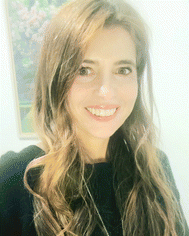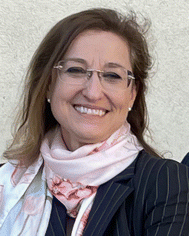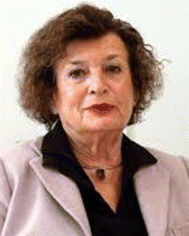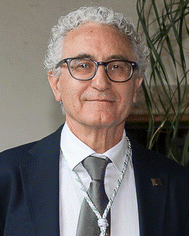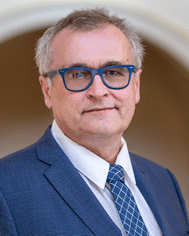Stability and properties of new-generation metal and metal-oxide clusters down to subnanometer scale
María Pilar
de Lara-Castells
 *a,
Cristina
Puzzarini
*a,
Cristina
Puzzarini
 *b,
Vlasta
Bonačić-Koutecký
*b,
Vlasta
Bonačić-Koutecký
 *cd,
M. Arturo
López-Quintela
*cd,
M. Arturo
López-Quintela
 *e and
Stefan
Vajda
*e and
Stefan
Vajda
 *f
*f
aInstitute of Fundamental Physics (ABINITFOT Group), Consejo Superior de Investigaciones Científicas, E-28006, Madrid, Spain. E-mail: Pilar.deLara.Castells@csic.es
bDipartimento di Chimica “Giacomo Ciamician”, University of Bologna, via F. Selmi 2, I-40126 Bologna, Italy. E-mail: cristina.puzzarini@unibo.it
cCenter of Excellence for Science and Technology-Integration of Mediterranean Region (STIM), Faculty of Science, University of Split, Ruđera Boškovića 33, 21000 Split, Croatia at Interdisciplinary Center for Advanced Science and Technology (ICAST) at University of Split, Meštrovićevo šetalište 45, 21000 Split, Croatia
dDepartment of Chemistry, Humboldt-Universität zu Berlin, Brook-Taylor-Strasse 2, 12489 Berlin, Germany. E-mail: vbk@hu-berlin.de
ePhysical Chemistry Department, Faculty of Chemistry, and NANOMAG Laboratory, IMATUS, University of Santiago de Compostela, E-15782, Santiago de Compostela, Spain. E-mail: malopez.quintela@usc.es
fDepartment of Nanocatalysis J. Heyrovský Institute of Physical Chemistry of the Czech Academy of Sciences v.v.i, Dolejškova 3, 18223, Prague, Czech Republic. E-mail: stefan.vajda@jh-inst.cas.cz
This themed collection is devoted to the latest advances in the field of metal and metal-oxide clusters, down to the sub-nanometer scale. This initiative has been considered to be timely for the following reasons:
• Recent joint theoretical–experimental research has shown that subnanometer-sized metal clusters, and more generally atomically precise clusters or even single atoms, possess unexpected chemical and physical properties due to strong quantum confinement effects, these making them innovative materials for applications which include luminescence, sensing, theranostics, energy conversion, catalysis, and photocatalysis. In order to exploit these unique properties, much effort is being dedicated to the quest for the best ways to achieve their synthesis and experimental characterization under controlled conditions of temperature and pressure, using the most advanced spectroscopic techniques and cutting-edge synthesis methods.
• Clusters of well-defined size in solution can now be synthesized by different methods. Such systems have the potential to bridge the world of model catalysts and applications using well-defined particles down to a handful of atoms. The study of the catalytic activities of such systems could bring novel solutions to many reactions in very important fields, such as environment, energy and nanomedicine.
• Moreover, helium nanodroplets have very recently been proposed as confinement containers of novel metal and metal-oxide clusters. The droplets not only provide an ultra-cold, very clean, and inert environment for their synthesis, but also for their soft-landing deposition on any substrate in an ultra-high vacuum environment.
• Likewise, the quest for the fundamental understanding of the stability and physico-chemical properties of these novel materials, as well as their new potential applications, have motivated impressive developments of modern multi-scale first principles tools, including the most advanced methods for electronic structure theory and molecular motion as well as innovative machine learning-routed algorithms.
Further steps in shaping this modern field require a tight collaboration between experimentalists with highly specific technical expertise and theoreticians working on suitable models of both unsupported (in air or solution) and surface-supported metal and metal-oxide clusters. For this reason, a special emphasis has been given to the interplay between experiment and theory. More generally, this collection has brought together theory, fundamental-oriented research in vacuum and helium droplets, including systems of astrochemical relevance, and more application-oriented research of metal and metal-oxide clusters in solution, covering subnano- and nano-meter ranges. It gathers more than 25 articles, also including a number of “hot” contributions reporting recent developments and challenging applications in the field of metal and metal-oxide clusters.
The Collection is introduced by the review article by Jašik, Fortunelli, and Vajda (https://doi.org/10.1039/d1cp05677h), summarizing major advancements achieved by joint theoretical and experimental studies of surface-supported subnanometer-sized metal clusters, and covering the sub-field of ligand-protected metal clusters as well. The review starts with a description of the experimental and theoretical tools aimed at characterizing the static and dynamical properties of surface-supported metal clusters. Since there is a major concern about the sintering of the smallest clusters in larger nanoparticles with the consequential loss of their special properties, the important topic of their stability is discussed in great detail too. Moreover, the authors provide an overview of the applications of surface-supported subnanometer-sized metal clusters. They focus not only on heterogeneous catalysis but also on applications that are still at a pioneering stage such as electrocatalysis and photocatalysis, with a particular focus on the determination of their optical properties. Along these lines, detailed studies of the optical responses of unsupported and surface-supported size-selected silver clusters (from a few tens to a few hundred atoms) have also been reported in this collection, these include plasmonic excitations using, e.g., a combination of reduced density matrix and density functional theories by Vazhappilly et al. (https://doi.org/10.1039/d2cp04922h). In the context of nano-optics and nano-biosensing for medical diagnostics within the bio-nano field, recently, the interface of ultrasmall metal nanoclusters (NCs) with proteins has been presented. This offers a dual opportunity: proteins can be used for protecting NCs, and the surface ligands of NCs may interact with proteins. Here, the authors Antoine, Maysinger, Sancey and Bonačić-Koutecký1 identify and discuss remaining open questions about the bio–NC interface that call for future research efforts.
The different contributions of this collection have focused on small metal and metal-oxide nanoparticles in the size regime below 10 nm, where quantum confinement influences the system functionality, thereby exploring nanoparticles from ≈10![[thin space (1/6-em)]](https://www.rsc.org/images/entities/char_2009.gif) 000 atoms (≈10 nm) to the one nanometer and subnanometer scale all the way to single metal atoms. On the one hand, Grammatikopoulos, Bouloumis, and Steinhauer (https://doi.org/10.1039/d2cp04068a) explore current challenges in gas-phase synthesis of nanoparticles, emphasizing their potential for application in neuromorphic computing. On the other hand, Huseyinova et al. (https://doi.org/10.1039/d2cp04550h) report a very simple wet chemical method to produce large quantities (around grams per batch) of Cu clusters with ≈10 atoms (Cu10). The authors describe that when Cu2+ ions are reduced with NaBH4, in the presence of cysteine as capping ligand, only Cu-oxide nanoparticles are formed. However, when the same reaction is carried out in the presence of catalytic Cu5 clusters (above a critical ratio [Cu5]/[Cu2+] ≈ 0.005) the reaction proceeds almost quantitatively to the formation of Cu10 clusters. Contrary to Cu5 clusters, which absorb only in the UV, Cu10 clusters absorb also in the visible. The authors further explored the photocatalytic properties of the synthesized clusters reporting that they degrade (with a normal visible light lamp) methyl orange (a dye used as a contaminant model) with a (TOR) turnover rate ≈3 orders of magnitude larger than those reported before with different semiconductor strategies. Such large photocatalytic efficiencies are assumed to be due to the fact that each cluster works as a very localized catalytic center and that the photo-produced holes are highly oxidant.
000 atoms (≈10 nm) to the one nanometer and subnanometer scale all the way to single metal atoms. On the one hand, Grammatikopoulos, Bouloumis, and Steinhauer (https://doi.org/10.1039/d2cp04068a) explore current challenges in gas-phase synthesis of nanoparticles, emphasizing their potential for application in neuromorphic computing. On the other hand, Huseyinova et al. (https://doi.org/10.1039/d2cp04550h) report a very simple wet chemical method to produce large quantities (around grams per batch) of Cu clusters with ≈10 atoms (Cu10). The authors describe that when Cu2+ ions are reduced with NaBH4, in the presence of cysteine as capping ligand, only Cu-oxide nanoparticles are formed. However, when the same reaction is carried out in the presence of catalytic Cu5 clusters (above a critical ratio [Cu5]/[Cu2+] ≈ 0.005) the reaction proceeds almost quantitatively to the formation of Cu10 clusters. Contrary to Cu5 clusters, which absorb only in the UV, Cu10 clusters absorb also in the visible. The authors further explored the photocatalytic properties of the synthesized clusters reporting that they degrade (with a normal visible light lamp) methyl orange (a dye used as a contaminant model) with a (TOR) turnover rate ≈3 orders of magnitude larger than those reported before with different semiconductor strategies. Such large photocatalytic efficiencies are assumed to be due to the fact that each cluster works as a very localized catalytic center and that the photo-produced holes are highly oxidant.
Transitioning to single metal atoms, the joint experimental–theoretical study by Prúcha et al. (https://doi.org/10.1039/d2cp04076j) highlights that their stabilization on suitable substrates such as graphene and its derivatives is a convenient route towards environmentally-friendly materials with tailored electronic and magnetic properties seeking applications in, e.g., sensors, data storage, and single atom catalysts. The authors also analyse the role of explicit coordination of late 3d single metal species by water molecules to characterize their binding to the cyanographene surface. The development of efficient, accurate, and physically interpretable solvent models to study surface-supported metal clusters and single metal atoms in solution is in fact an important prospect, also including helium droplets as the liquid medium.
Focusing on gas-phase (unsupported) metal and metal-oxide clusters, the contribution by Debnath et al. (https://doi.org/10.1039/d2cp02938c) shows how the infrared photo-dissociation spectra of small aluminium-oxide clusters, also including the influence of Fe-substitution, can be assigned based on density functional theory calculations. On the other hand, magnetic deflection measurements by De Knijf et al. (https://doi.org/10.1039/d2cp05202d) show that the magnetic moment per cobalt atom is higher in small cobalt-oxide clusters than in pure cobalt clusters.
Particularly challenging in the framework of quantum-chemical computations is the correct prediction of the spin magnetic ordering in open-shell transition metal clusters, where uncertainties can be large due to the complexity of intrinsically multi-reference electronic structure problems. This concern triggered the application of multi-configurational ab initio theory by Ferrari and Gómez-Coca (https://doi.org/10.1039/d2cp03643f), this allowing to reproduce the experimentally determined spin multiplicities of cationic cobalt clusters Con+ (n < 5). Multi-reference ab initio theory has also been chosen by Fernández and de Lara-Castells to explore the possibility that atomic metal clusters couple to each other in such a way that their initial structures are preserved and, although their initial charge distributions experience modifications, initial partners can yet be recognized (https://doi.org/10.1039/d2cp03537e). Both contributions illustrate the possibility of using modern wavefunction methods in electronic structure theory in a first-principles characterization of gas-phase metal clusters at the subnanometer scale,2 not only featuring predictive capabilities but also allowing assessment of the accuracy of state-of-the-art density functional approaches along with cutting-edge spectroscopic measurements.
In closing, we would like to remark that this Editorial is not intended to be exhaustive in presenting all the excellent contributions making this themed collection exceptional. Rather, we have highlighted a few articles illustrating the rich tool-box of topics which are emerging in this exciting field of new materials research. Finally, we would like to express our gratitude to all the contributing authors for their dedicated time and efforts as well as to the editors of Physical Chemistry Chemical Physics, and the RSC editorial staff, for their continuous endeavors and encouragement in making our initiative possible. We are also thankful to Anouk Rijs, Editorial Board Chair of the journal, for having helped us in the original proposal of this collection.
The networking from the COST Action CA21101 – CONFINED MOLECULAR SYSTEMS: FROM A NEW GENERATION OF MATERIALS TO THE STARS (COSY) – is also gratefully acknowledged. MPdLC thanks the support of the EU Doctoral Network PHYMOL (project call reference HORIZON-MSCA-2021-DN-01) as well as Spanish Agencia Estatal de Investigación (AEI) under Grant No. PID2020-117605GB-I00. SV acknowledges support from the European Union*s Horizon 2020 research and innovation program under grant agreement no. 810310, which corresponds to the J. Heyrovsky Chair project (“ERA Chair at J. Heyrovskyý Institute of Physical Chemistry AS CR – The institutional approach towards ERA”). The funders had no role in the preparation of the article. MAL-Q acknowledges the Consellería de Educación (Xunta de Galicia), Grupos Ref. Comp (Grant No ED431C 2021/26). VB-K acknowledges the project STIM – REI, Contract Number: KK.01.1.1.01.0003, funded by the European Union through the European Regional Development Fund – the Operational Programme Competitiveness and Cohesion 2014-2020 (KK.01.1.1.01).
Notes and references
- R. Antoine, D. Maysinger, L. Sancey and V. Bonačić-Koutecký, Commun. Chem., 2022, 5, 47 CrossRef CAS PubMed.
- M. P. de Lara-Castells, J. Colloid Interface Sci., 2022, 612, 737–759 CrossRef CAS PubMed.
| This journal is © the Owner Societies 2023 |

